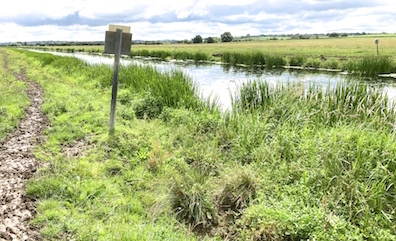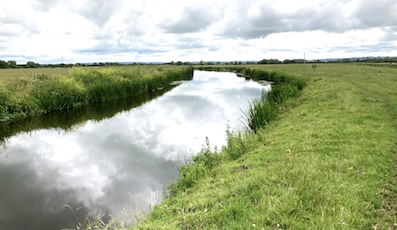|
Witcombe Bottom is a large area of grassland in the neighbouring parish of Ash. It is home to a large intensive growing dairy farm of more than 1000 head. The output of almost all the farms in Ash and Martock is geared to supporting the dairy and the slurry is fed back onto the farms. For this reason the survey was extended northwards to include this area. High levels of phosphate were found in all streams and ditches tested and in the river Yeo.
Two sewage treatment works discharge into the area. The plant at Ilchester includes phophate removal and was foud to have no affect on the Yeo levels. The small works serving Tintinhull, discharges indirectly into the Witcome Main Drain; its impact could not be tested.
The main agricultural enterprise in this area is Witcombe Dairy, and the greater part of the agricultural land in this area, and in the two Parishes of Ash and Martock, is dedicated to supplying fodder, in various forms but mainly grass, to the dairy. The grass is fertilised mainly by slurry.
2 The phosphate level in all samples was Poor or Bad.
All ditches tested were classified as Poor or Bad with a phospate level up to 100x the normal stable level. The area is a major contributor to the poor state of the Yeo, and thence the Parrett, at Langport.
3 The main crop is cultivated grass.
Almost all the fields, other than those closest to the Yeo which regularly flood, are planted with fast-growing grass fed with slurry and cropped several times a year for the dairy. Many fields have been greatly enlarged by hedge removal.
4 None of the fields cultivated for grass, or any other crop, had field margins that met DEFRA standards.
All fields were cultivated to the hedgerows. There was evidence in a small minority of fields of a small margin on which slurry was not applied but in all cases this was less than 6m. Every one of the field edge ditches tested for phosphate showed Poor or Bad water quality. One, flowing into Witcombe Main Drain, showed readings up to 2.9ppm, over 100x the normal stable level.
5 Poaching of the Yeo and the Main Drain is widespread
The large area of grassland adjoining the Yeo and enclosing Witcombe Bottom Main Drain has no mechanism to prevent poaching (trampling and feeding) of the watercourse banks. Cattle, up to 200 head, freely graze the riperian plants and drink from the the Main Drain. This is in marked contast to the north bank of then Yeo where livestock is restrained by electric fences. The biodiversity difference between the two banks is striking.
6 Witcombe Main Drain is consistantly heaily polluted
All the rhynes in the area drain into Witcombe Main Drain which has a high phosphate concentration consistemtly around 0.8pmm independent of water depth.. Because the water moves, usually daily, when Long Load pumps are on, summer algal blooms only occur downstream of stands of reed or waterlilies where the flow is impeded. Both banks are heavily poached along their whole length.
There is evidence of a seasonal variation which will be studied further. A complicating factor is the difference between summer and winter drainage protocols which means a reversal of the flow in some channels. Because of the large difference in normal water volume between summer and winter a varialtion in concentration is expected.
8 Ponds in the area may be largely free of phosphate
There are several ponds in the area dedicated in the main apparently to seasonal wildfowl sporting. All appear to be retention ponds that are topped up from the rhynes when in spate. There does not appear to be a through flow but this has not been fully researched on the ground. One pond only was tested and showed a low level of phosphate contamination. Pond vegetation removes the phosphate from the trapped water.
9 Ilchester Sewage Treatment Works
No additional phosphate was detected below the outflow into the Yeo from Ilchester Sewage Treatment Works where Wessex Water has installed a phosphate removeal stage.
|




